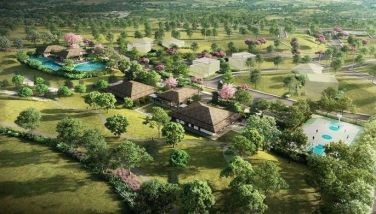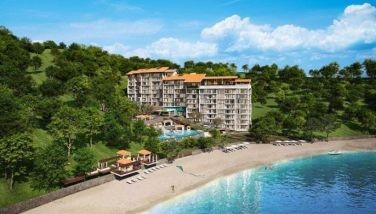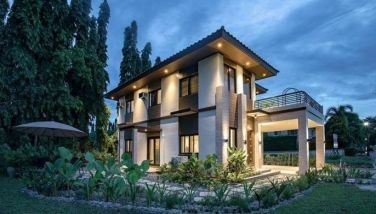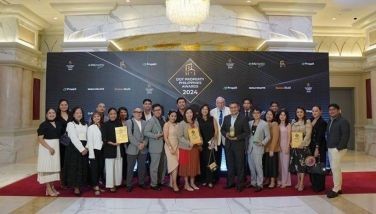Say Hai to South Forbes
Manila, Philippines - What’s not to love about anything Japanese? Anime, sushi, sake, origami, papel de hapon. Okay, maybe not the latter. But Japanese culture has been so ingrained in the Filipino consciousness that we take it as part of our own.
This is true in South Forbes Golf City, the country’s largest fully-integrated and all-themed golf resort city at the forefront of the Metro Sta. Rosa – Tagaytay corridor, and recipient of the Best Golf Community Development by the 2007 CNBC International Property Awards, the world’s most prestigious property awards programme, and, recently, the Highly Commended Award for Best Development by the 2010 Bloomberg Asia-Pacific Residential Award, where Japanese culture adds a distinct character to its themed Residential.
“This is Tokyo Mansions,” said Cathay Land president Jeffrey Ng. “The central theme is Zen where our residents are living life in harmony with the surroundings and having balance in their everyday life.”
Konnichi wa. Entering Tokyo Mansions unveils a simple display of plants and dry stones at the guardhouse, a simple structure with a slender base and a prominent roof. The swaying row of tall bamboo along the stone pedestrian walk immediately creates a relaxing, lulling effect. The short walk from the street to one’s front porch becomes a respite, allowing its residents to enter in a more peaceful disposition.
Otaku. Immediately, two model mansions reveal the simplicity and elegance unique only to the Japanese -- the noble Edo and the poetic Meiji -- as well as extend an invitation for those who want to see their inner beauty.
 The Tokyo Mansions clubhouse exudes balance through symmetry.
The Tokyo Mansions clubhouse exudes balance through symmetry. The Edo model mansion, a home of sophistication, has a contemporary take on Japanese architecture and interior design. The interiors at the main level are a testament to Zen minimalism with the introduction of full-height glass panels and sliding doors integrates the private indoor space to the natural outdoor area. The dark wood of the furniture and architectural elements blends well with the white canvas of the floor, walls, and ceiling. The open layout of the living-dining-kitchen areas allows for a more fluid and functional use of space. The adjacent den is made private with wood-framed sliding doors that mimic the traditional shoji screens.
The Edo’s next-door neighbor is the Meiji which extols the virtue and beauty of simplicity and austerity with its pristine-white walls and clean yet expressive lines from ground to roof, free from ostentatious ornamentation often used in classical Western design. The tranquil waters of the pools finished in black tiles create soft reflections symbolic of a calm and enlightened spirit. A layer of black Japanese roof tiles rests on wooden eaves and exposed rafters that mimic the gentle waves of the ocean. The best time to view the Meiji mansion is from dusk to evening when it transforms to a traditional Japanese lantern that illuminates the night sky as originally conceived by the architect.
Kyuuden. With density of urban housing and the lack of private space being so common today, the Tokyo Mansions clubhouse at the end of the main avenue is a regular palace. It is an elegant structure built for residents and guests. The circular road fronting it has a fountain at the center from which black stone paving forms concentric ripples.
Yoshi! Move in right here, right now. Call 635-7777 or 631-8855 for a free city tour or log on to www.southforbes.com for more information.
- Latest




























